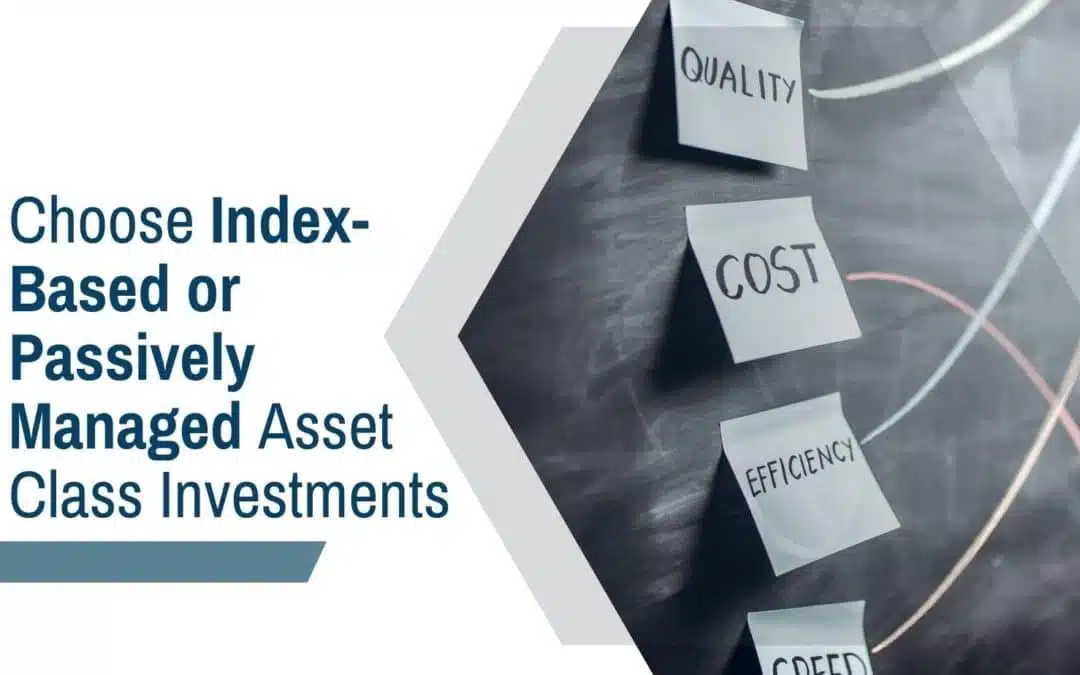the empowered investor
Taking Control of Your Personal Financial Action Plan
Becoming the Boss of Your Financial Future
Key Takeaways
- Having completed our tour of financial pitfalls, we introduce two essential skill sets for Empowered Investors: personal financial planning and evidence-based investing.
- Having a retirement plan and investment plan is key to preparing for long-term financial security. Additional components factor in as well, including debt management, risk management, tax planning, and estate planning.
- These planning components require different levels of attention across three life phases, as you accumulate wealth, prepare for retirement, and enter into retirement.
- Coming next: We’ll explore each planning phase in more detail, followed by a closer look at how evidence-based investing fits into your plans.
“[F]ind the freedom that comes from being in charge of yourself.”
Welcome to Part 8 of our Empowered Investor blog series. If our series were flying lessons, you could congratulate yourself for having mastered the essential safety checks every pilot should know before taking flight. These include how to ward off the perils of failing to have an investment plan; being poorly diversified; trying to forecast future markets or chase past performance; or letting your behavioral biases overrule your evidence-based resolve.
Now that you’re familiar with the pitfalls that can ground a good flight plan, let’s dive into how to best prepare for lift-off.
PLANNING AND INVESTING FOR FINANCIAL SUCCESS
Just as any pilot needs to know two things—how to fly the plane and how to chart an accurate course—an Empowered Investor must master two equally important skill sets:
- Navigation: How do you create your personal financial plan?
- Implementation: How do you invest in alignment with your plan?
Together, planning and investing combine to guide you toward long-term financial security. Across our next several posts, we’ll focus on navigation skills, i.e., the essential elements of financial planning across the phases of your life. After that, we’ll look at how to implement the principles of evidence-based investing to actually realize your financial vision.
FINANCIAL SUCCESS GOES BEYOND INVESTING
As we described in our book, “The Empowered Investor”:
“Securing your family’s financial destiny—the core of becoming an empowered investor—involves more than just managing your portfolio and investments, although that is a crucial element. It means taking control of the financial planning process and developing a personal financial plan.”
In other words, if you don’t start with a plan, and then structure your investments accordingly, the money alone may not take you where you were actually hoping to go.
That’s where personal financial plan comes in, to help you discover, document, and accurately aim your money toward your heart’s desires.
For this, financial planning goes beyond your investments to take in the big picture, considering every aspect of your life: saving for retirement, debt management, cash flow, insurance, taxes, estate planning, and more. It focuses on you and your family’s unique circumstances, dreams, opportunities, and challenges. Are you a business owner or an employee? Married or single? With children or without? Eager to retire or wanting to work as long as possible? The choices you have made in the past and the aspirations you have for the future will shape your path forward.
THREE EVOLVING PHASES OF FINANCIAL LIFE PLANNING
Retirement and investment planning are key components of preparing for long-term financial security. Plus, other areas of your financial plan will require additional attention during different phases of your life. As the saying goes, a picture speaks a thousand words, so let’s illustrate rather than describe what that looks like:
| ACCUMULATION PHASE | PRE-RETIREMENT PHASE | RETIREMENT PHASE | |
|---|---|---|---|
| (age 25–50) | (age 50–65) | (age 65+) | |
| Retirement Plan | • save 15–20% of family earnings • save for children’s education | • increase saving rate to 20% or more of family earnings | • determine a sustainable portfolio drawdown rate |
| Debt Management | • more important in this life phase • pay off debt | • pay off debt | |
| Investment Plan | • focus on long-term growth | • focus on moderate growth | • focus on preserving capital with some long-term growth |
| Risk Management | • more important in this life phase • protect your family with insurance | • protect your family with insurance | • protect your family with insurance |
| Tax Plan | • more important in this life phase • minimize tax on investment withdrawals | ||
| Estate Plan | • prepare wills and powers of attorney (POAs) | • keep wills and POAs updated | • more important in this life phase • wills and POAs • plan legacy and charitable giving |
You’ll notice we’ve segmented life planning into three phases as you accumulate wealth, prepare for retirement, and enter into retirement. The age ranges serve as helpful guidelines, not strict parameters. For example, it’s never too late to focus on accumulating wealth, nor is there a bad age at which to manage your debt load. Just as each of us learns to walk and talk in our own good time, your own planning phases may march to the beat of a different drummer—and that’s just fine.
In our next few posts, we’ll explore each life planning phase at greater length, from your foundational years, to your power plays, to when (or if) you start chilling out. In the meantime, if you have questions or comments about what you’ve read so far, please reach out to us today. We’d love to hear from you!
Additional Reading:
- The Richest Man in Babylon: George S. Clason
- The Millionaire Next Door: Thomas Stanley, William Danko
- And, as always, our own book: The Empowered Investor
More Winning Investment Principals

Investment Principal #4: Maximize Returns with Key Investment Factors
Discover how investment factors can help you maximize returns. Learn strategic factor investing to enhance your portfolio.

Investment Principal #3: Using Passive/Index Funds or ETFs
Index-based or passive asset class funds focus on how to reduce the costs and frictions involved in capturing the market’s generous expected returns over time.

Investment Principal #2: Diversify Your Asset Classes
The magic behind diversification is found in a financial measure known as correlation, or the degree to which two asset classes move in similar patterns.
Stay on top of your financial education
Subcribe and follow to get updates on important wealth management topics.

Connect
Visit Us
3535 St-Charles Blvd.
Suite 703
Kirkland, Quebec
H9H 5B9
Connect